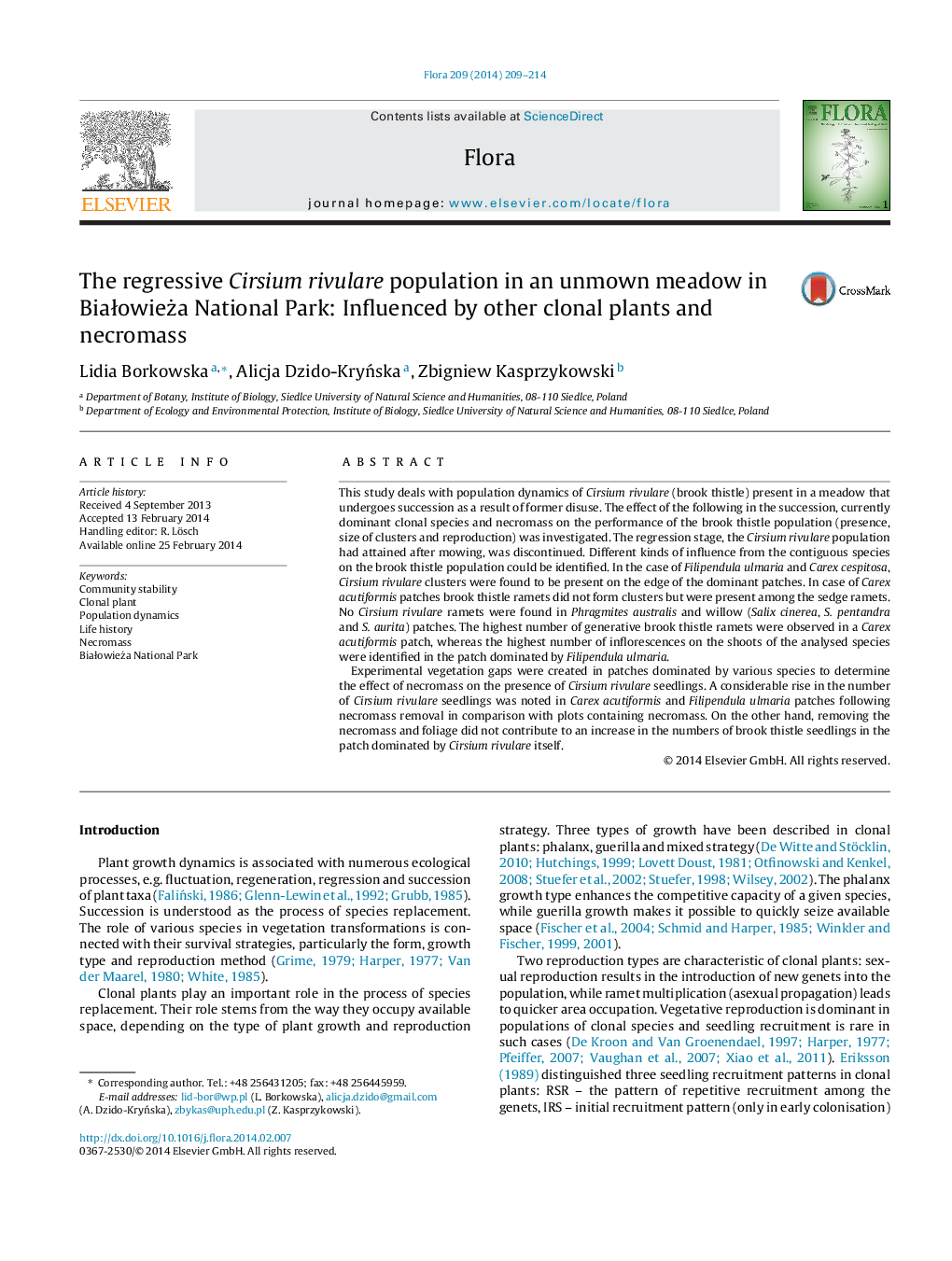| Article ID | Journal | Published Year | Pages | File Type |
|---|---|---|---|---|
| 2179599 | Flora - Morphology, Distribution, Functional Ecology of Plants | 2014 | 6 Pages |
This study deals with population dynamics of Cirsium rivulare (brook thistle) present in a meadow that undergoes succession as a result of former disuse. The effect of the following in the succession, currently dominant clonal species and necromass on the performance of the brook thistle population (presence, size of clusters and reproduction) was investigated. The regression stage, the Cirsium rivulare population had attained after mowing, was discontinued. Different kinds of influence from the contiguous species on the brook thistle population could be identified. In the case of Filipendula ulmaria and Carex cespitosa, Cirsium rivulare clusters were found to be present on the edge of the dominant patches. In case of Carex acutiformis patches brook thistle ramets did not form clusters but were present among the sedge ramets. No Cirsium rivulare ramets were found in Phragmites australis and willow (Salix cinerea, S. pentandra and S. aurita) patches. The highest number of generative brook thistle ramets were observed in a Carex acutiformis patch, whereas the highest number of inflorescences on the shoots of the analysed species were identified in the patch dominated by Filipendula ulmaria.Experimental vegetation gaps were created in patches dominated by various species to determine the effect of necromass on the presence of Cirsium rivulare seedlings. A considerable rise in the number of Cirsium rivulare seedlings was noted in Carex acutiformis and Filipendula ulmaria patches following necromass removal in comparison with plots containing necromass. On the other hand, removing the necromass and foliage did not contribute to an increase in the numbers of brook thistle seedlings in the patch dominated by Cirsium rivulare itself.
